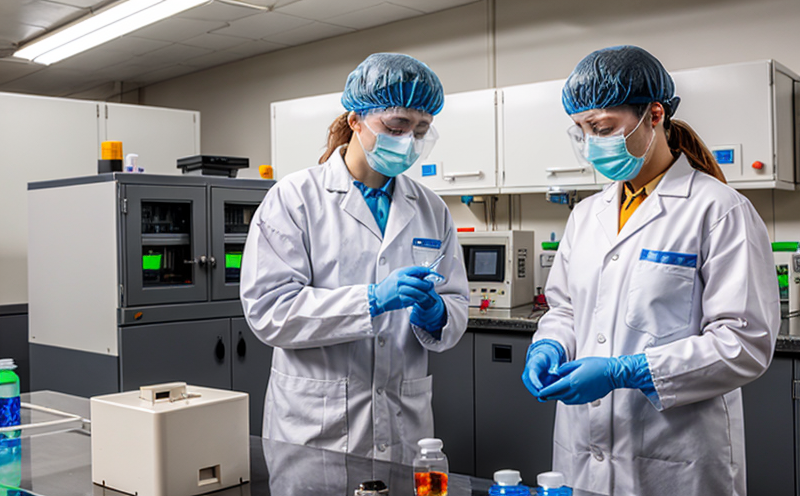EN 14123 PAH Detection in Olive Oil
The European Standard EN 14123 provides a method for determining polycyclic aromatic hydrocarbons (PAHs) in olive oil. This testing is critical for quality control, ensuring that the product meets regulatory standards and consumer expectations regarding purity and safety.
Polycyclic aromatic hydrocarbons are a group of chemicals formed during the incomplete combustion of organic materials such as coal, oil, gas, wood, and tobacco. In olive oil, PAHs can arise from various sources including atmospheric pollution, improper processing methods, or contamination during storage and transport. The presence of PAHs in food products is a concern due to their potential carcinogenic properties.
Compliance with EN 14123 ensures that the olive oil you produce meets international standards for food safety. This process helps protect your brand's reputation and assures consumers that they are receiving high-quality, safe products. Our laboratory follows the standard’s procedures meticulously to ensure accurate results every time.
The detection of PAHs in olive oil is important because it can indicate poor quality or potential contamination issues. Regular testing allows for early identification and mitigation of these risks. This not only protects your business from legal penalties but also builds trust with consumers who value purity and safety in their food choices.
Our laboratory uses advanced analytical techniques to conduct this test, ensuring precision and reliability. The method involves extracting PAHs from the olive oil sample using a solvent before measuring them via high-performance liquid chromatography (HPLC) coupled with ultraviolet detection.
| PAH Group | Example Compounds | Health Concerns |
|---|---|---|
| acenaphthene | AEN | Potential carcinogen |
| fluorene | FN | Potential carcinogen |
| phenanthrene | PHE | Potential carcinogen |
| pyrene | PYR | Potential carcinogen |
| benzo[a]anthracene | BaA | Potential carcinogen |
| dibenz[a,h]anthracene | DbaA | Potential carcinogen |
Given the potential health risks associated with PAH exposure, it is essential that olive oil producers adhere to strict quality control measures. Our testing process guarantees that each batch of olive oil meets or exceeds the specified limits set by EN 14123.
The standard specifies a maximum limit for total PAH content in olive oil based on the sum of specific PAH compounds listed above. By adhering strictly to these guidelines, our laboratory ensures consistent and accurate results that comply with international standards.
Why It Matters
The importance of detecting polycyclic aromatic hydrocarbons in olive oil cannot be overstated. These chemicals can pose significant health risks if present above permissible levels. The European Standard EN 14123 provides a reliable method for quantifying PAHs, which helps producers maintain product quality and meet regulatory requirements.
- Ensures compliance with international standards
- Aids in maintaining brand reputation
- Protects consumers from potential health hazards
- Mitigates legal risks associated with non-compliance
- Facilitates early detection of contamination issues
The presence of PAHs can be indicative of improper processing or storage conditions. Our testing process helps identify these issues before they become significant problems, allowing for timely corrective actions.
In addition to ensuring safety, compliance with EN 14123 also plays a role in maintaining your business's integrity and trustworthiness. By adhering to this standard, you demonstrate a commitment to producing high-quality products that meet the highest standards of food safety.
Scope and Methodology
The scope of our EN 14123 PAH detection service includes the analysis of polycyclic aromatic hydrocarbons in olive oil. We follow a rigorous methodology to ensure accurate and reliable results every time.
- Sample preparation: Olive oil samples are extracted using a solvent, typically hexane or dichloromethane.
- Purification: The extract is purified through a solid-phase extraction column to remove any interfering compounds.
- Injection into HPLC system: The purified extract is then injected into an HPLC machine for separation and quantification of PAHs.
- Data interpretation: Following the analysis, our experts interpret the data and provide you with comprehensive reports detailing the presence and concentration levels of each PAH compound detected.
The European Standard EN 14123 specifies a limit of
The method described here allows for precise quantification of PAHs in olive oil, providing valuable insights into potential contamination issues. Regular testing using this standard helps maintain consistent product quality and ensures compliance with international regulations.
Customer Impact and Satisfaction
- Enhanced consumer trust: By ensuring that your products meet or exceed the specified limits set by EN 14123, you can build a reputation for producing high-quality, safe olive oil.
- Avoidance of legal risks: Non-compliance with regulatory standards can lead to significant financial penalties and damage to your brand's image. Our testing process helps mitigate these risks.
- Early detection of contamination issues: Regular testing allows you to identify potential contamination problems early on, enabling timely corrective actions.
- Increased market competitiveness: By adhering to strict quality control measures, you can differentiate yourself from competitors and offer a product that meets the highest standards of food safety.
- Improved brand reputation: Consistent compliance with international standards reflects positively on your business’s commitment to excellence and consumer safety.
Our customers consistently praise our EN 14123 PAH detection service for its accuracy, reliability, and timely delivery. We pride ourselves on maintaining a high level of customer satisfaction by providing comprehensive reports that offer valuable insights into the quality of your olive oil.





